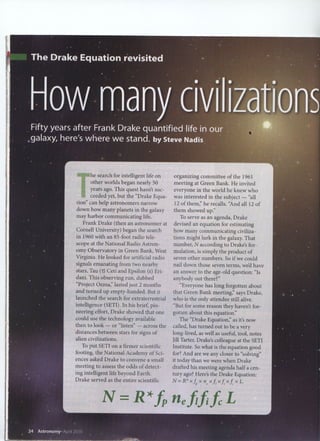The drake equation revisited
In the almost half century since the Drake Equation was first conceived, a number of profound discoveries have been made that require each of the seven variables of this equation to be reconsidered. The discovery of hydrothermal vents on the ocean floor, for example, as well as the ever-increasing extreme conditions in which life is found on Earth, suggest a much wider range of possible extraterrestrial habitats. The growing consensus that life originated very early in Earth's history also supports this suggestion. The discovery of exoplanets with a wide range of host star types, and attendant habitable zones, suggests that life may be possible in planetary systems with stars quite unlike our Sun. Stellar evolution also plays an important part in that habitable zones are mobile. The increasing brightness of our Sun over the next few billion years, will place the Earth well outside the present habitable zone, but will then encompass Mars, giving rise to the notion that some Drake Equation variables, such as the fraction of planets on which life emerges, may have multiple values.

